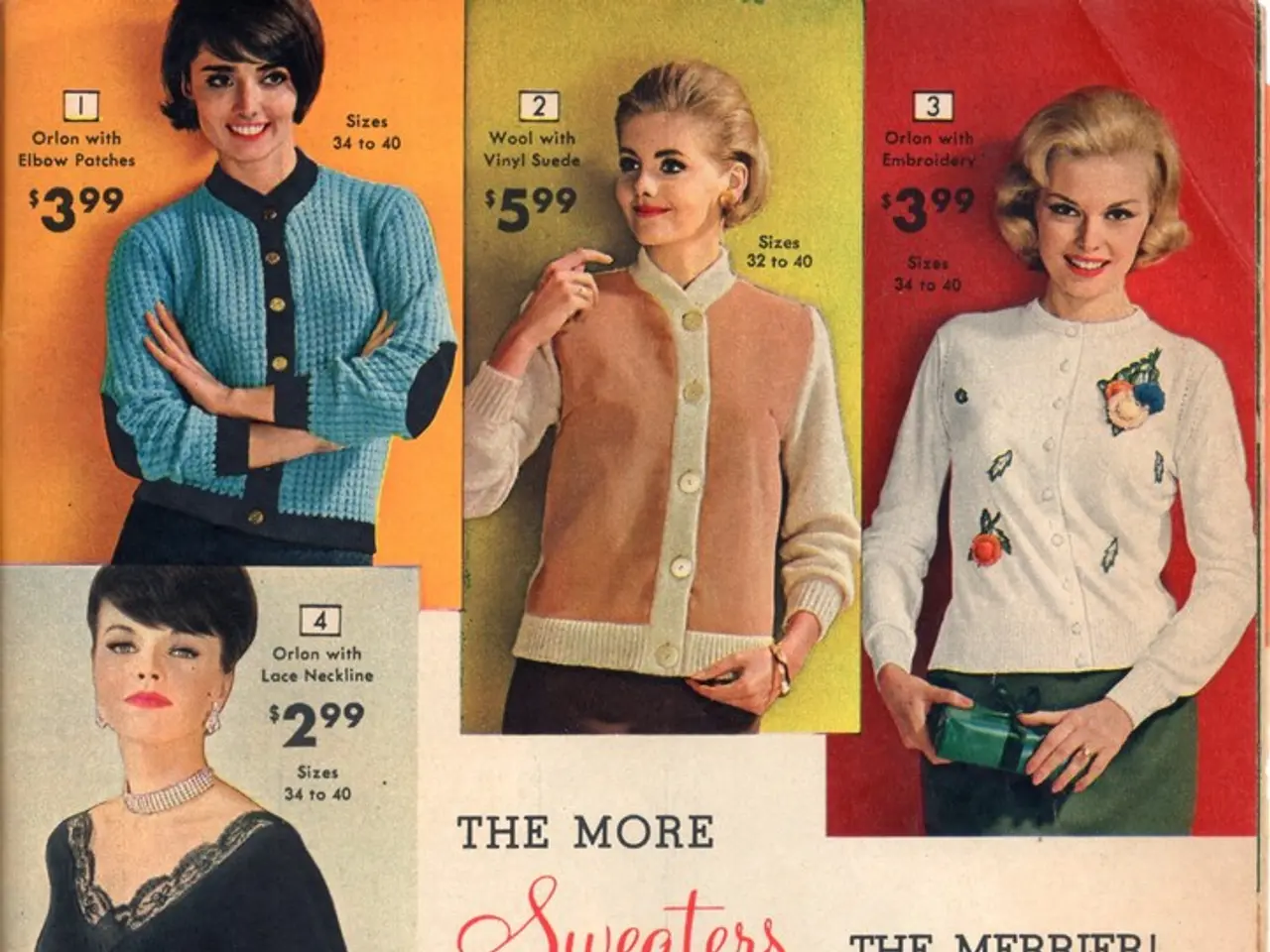Revolution in Fashion: Is the Era of Unisex Appearance Upon Us?
In the ever-evolving world of fashion, genderless fashion is making a significant stride in 2025, blurring the lines between traditional menswear and womenswear. This trend, driven by Gen Z and Millennials, prioritises expression, inclusivity, and ethical considerations, attracting a diverse customer base.
The widespread adoption of gender-neutral garments is a key aspect of this movement. Skirts on traditionally masculine figures, corsets on those outside female norms, and kaftans in professional settings are becoming commonplace, reflecting fluidity and breaking binary fashion roles. The influence of cultural and Indigenous fashions, where gender fluidity was historically present, is also contributing to the evolving Western approach to genderless style.
A shift away from rigid style rules toward personal expression, comfort, and combining different prints, textures, and ethnic styles regardless of gender is also noticeable. This trend overlaps with sustainability and ethics, as many gender-neutral fashion lines also emphasize eco-friendly materials and production methods, aligning with consumers’ demand for purpose-driven fashion.
However, genderless fashion faces significant challenges. Industry inertia rooted in traditional gender segmentation remains a hurdle, as historical fashion marketing and retail categorization still often enforce binary distinctions. Consumer acceptance varies by culture and region, with some markets less open to fluid gender expression in clothing. Balancing inclusivity with commercial viability is another challenge, as brands need to create designs that resonate across diverse bodies and identities without alienating existing consumers or diluting the message.
Avoiding cultural appropriation while embracing diverse cultural garments requires sensitive collaborations with Indigenous peoples rather than superficial adoption. The sustainability challenge overlaps here as well, as ensuring eco-conscious approaches can be complex when scaling gender-neutral lines.
Pioneers in genderless fashion, like Pierre Cardin and Rudi Gernreich, designed pieces with the intention of subverting sartorial gender norms in the 20th century. However, their avant-garde creations were not fit for everyday wear. The concept of genderless fashion, which rejects traditional distinctions between male and female clothing, is not new, but it was not widely recognized until recently.
Independent brands like UY address the issue of sizing in genderless fashion by adjusting parts of their collections, making some pieces more "breast-friendly". Critics like Idan Gilony of UY Studio criticize labels that continue to prescribe what people should wear, and note that brands like Balenciaga still have men's and women's sections on their websites.
The global unisex fashion market is projected to expand by 10.82% between 2023 and 2031. However, unisex fashion off the rack has a reputation for being shapeless, unflattering, and dull. Harry Styles, a celebrity who has been praised for his forward-thinking style choices, is credited with reflecting and setting the tone for the style of a new generation.
In the future, Shih-Shun Huang, founder of the Berlin-based gender-fluid label #DAMUR, imagines a world where gender labels and expectations in fashion are eliminated altogether. Huang compares the process of advancing genderless fashion to peeling an onion, with each layer representing another label until you get to the heart. Gilony's long-term vision is that one day, customers will simply come in and try on whatever they like and what fits them, without needing to ask if it's for men or women.
In summary, genderless fashion is a prominent, expanding trend in fashion in 2025, driven by cultural shifts and consumer values around identity and sustainability. However, it faces challenges in overcoming entrenched gender norms, achieving widespread cultural acceptance, and responsibly incorporating diverse cultural influences.
[1] Vogue Business. (2021, September 16). The future of genderless fashion. Retrieved from https://www.voguebusiness.com/fashion/future-of-genderless-fashion
[2] Klarna. (2022). The state of fashion 2022. Retrieved from https://about.klarna.com/uk/state-of-fashion-2022/
[3] The Business of Fashion. (2021, September 17). The future of fashion is genderless. Retrieved from https://www.businessoffashion.com/articles/fashion-tech/the-future-of-fashion-is-genderless
[4] The Guardian. (2021, September 15). Genderless fashion: the future of the industry, according to Harry Styles and Idan Gilony. Retrieved from https://www.theguardian.com/fashion/2021/sep/15/genderless-fashion-the-future-of-the-industry-according-to-harry-styles-and-idan-gilony
- As the global unisex fashion market continues to expand, social media platforms have become a significant platform for promoting genderless fashion, allowing trailblazers like Harry Styles to set the tone for the style of a new generation with their fashion-forward choices.
- The fusion of lifestyle, fashion-and-beauty, entertainment, and pop-culture on social media creates a synergy that drives the inclusivity and personal expression embodied by genderless fashion, bridging cultural gaps and empowering individuals to express their identities freely.







